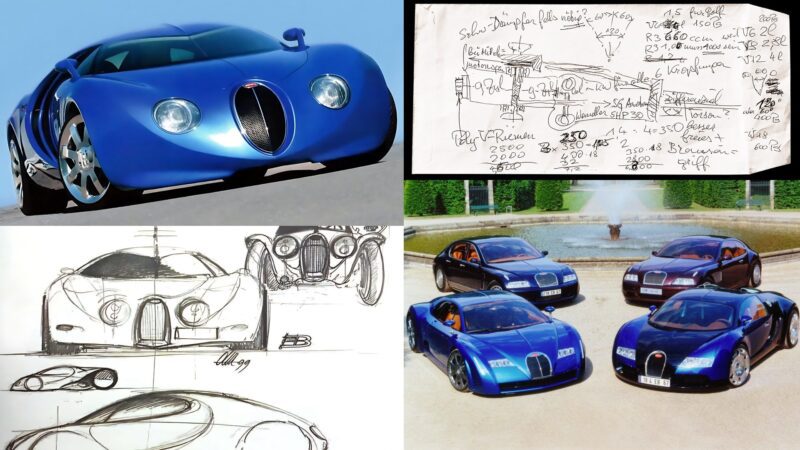As an automobile that rewrote the rules of modern supercars and hypercars, the original record-breaking Bugatti Veyron remains a showcase of engineering excellence and firmly occupies a place in the automotive hall of fame. From the 1999 concept to the final 2015 Grand Sport Vitesse La Finale, over 450 examples were built across 25 different iterations.
But long before it became a billionaire’s toy, a celebrity favorite, or a poster child for ultimate speed, the Bugatti Veyron was a name, and before that car was ever a name, it was a man. Pierre Veyron. But to truly understand why the Veyron name was chosen when the brand was being resurrected in the 2000s, we must look back at Bugatti’s long-standing tradition of honoring its heroes.

The EB in EB110 is a nod to founder Ettore Bugatti. The track-honed Divo is named after Albert Divo, who raced for Bugatti back in the 1920s, and then, of course, we have the more recent Chiron, which references Louis Chiron, one of Bugatti’s most successful pre-war drivers.
But with Veyron, the man was foundational and a key figure in Bugatti’s storied history. Born in 1903, the engineer, racer, and wartime hero is forged into the brand’s legacy by not just his intellect and skill, but also his loyalty towards the French marque and the Bugatti family.
Pierre Veyron originally studied engineering before being drawn into the world of motorsports. It was his friend Albert Divo, yes, that Divo who introduced him to industrialist André Vaginiez, who financially supported Veyron, to acquire his first race car: a Bugatti Type 37A, a car with which he promptly won the 1930 Geneva Grand Prix
Two years later, by 1932, he caught the attention of Jean Bugatti, son of Ettore Bugatti, who brought Veyron into the family. As a test driver, development engineer, and a trusted collaborator, Pierre Veyron was so much more than just a company driver. Throughout the 1930s, he helped shape Bugatti’s racing machines, both in the driving seat and on the garage floor.
Remember that back in the early days, motorsports was used as an indirect form of advertising to help sell road cars. Pierre’s feedback was instrumental in helping push the cars being built in Mosheim right to their limits, winning races in models like the Type 51 and Type 57.
Pierre Veyron’s big career break came in 1939, when he triumphed at the 24 Hours of Le Mans, along with co-driver Jean-Pierre Wimille in a Type 57C Tank. It would be Veyron’s final victory before World War II broke out, and he would join the French Resistance. He was awarded the Legion of Honour in 1945 for his service.

Decades later, when the great Ferdinand Pïech, grandson of Ferdinand Porsche, acquired the Bugatti brand under the Volkswagen Group, and set out to relaunch the brand, they needed a name that carried both weight and integrity. Enter ‘Veyron’.
A supercar for the 21st century, Piëch envisioned a car that would obliterate the status quo. A car with no compromises, the original team even dreamt of an 18-cylinder engine with the 18.4 Veyron concept. But after revisions, Bugatti finally settled on the famous quad-turbo 8.0-liter W16 that put out 1,000 PS (pferdestarke) or 986 horsepower on the production Veyron 16.4. The W16, of course, would do duty until the Chiron.
The original Veyron’s target? To dethrone the legendary McLaren F1, whose 240.1 mph top speed had stood unchallenged since its record run of 1998 at Volkswagen’s Ehra-Lessien test track in Germany. Ironically, Bugatti would beat that record at the same venue, seven years later in 2005, with a top speed of 253.8 mph (407 km/h) snagging the title of the fastest production car in the world and the Veyron name, would be one that brought it all tothether, tying the brand’s heritage with its ambitious future.
Images Source: Bugatti

